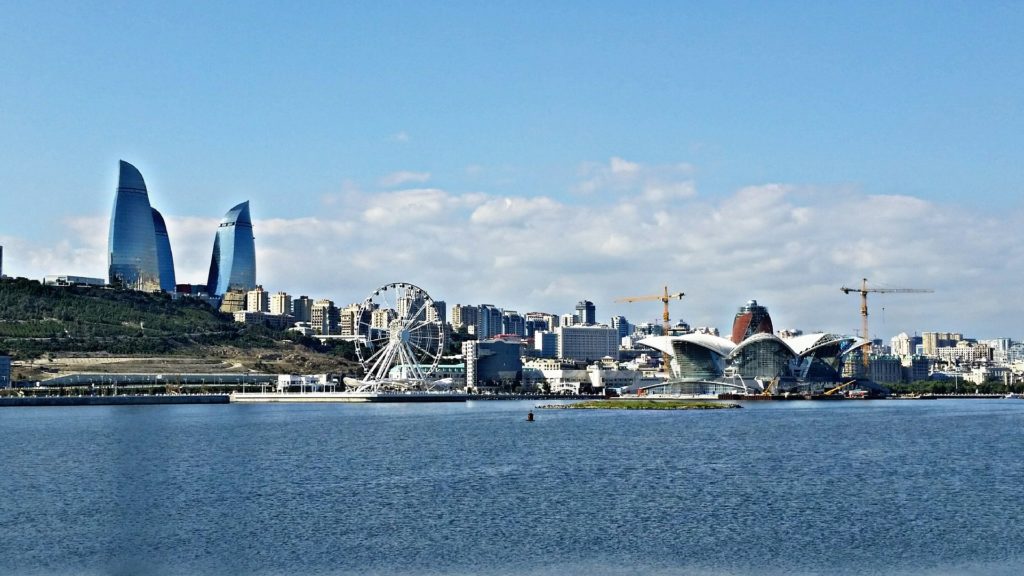BAKU
Azerbaijan’s Gross Domestic Product (GDP) shrank 0.2 percent in the first quarter of 2021 from a year earlier, mainly due to a decline in the country’s priority oil and gas sector.
The country’s economy, which relies heavily on oil and gas production, took a serious hit from a fall in global oil prices and the COVID-19 pandemic. In the first quarter, the economy shrank by 1.3 percent.
The State Statistics Committee said that decline in the oil sector was 8.4 percent, while the non-oil sector grew by 4.1 percent. In nominal terms GDP reached 25.1 billion mantas ($14.8 billion).
Azerbaijan reduced oil and gas condensate production by 5.2 percent year-on-year to 8.816 million tonnes in the first quarter of 2021. Natural gas production rose 5.7 percent to 10.563 billion cubic metres.
Industrial enterprises and individual entrepreneurs produced industrial products worth 14.9 billion manats, 3.8 percent less than in January-April 2020.
According to the committee, annual inflation in April was 4 percent, up from 3.9 percent in March. Azerbaijan forecasts annual inflation at 3 percent in 2021, slightly up from 2.8 percent in 2020.
The government projects GDP growth at 3.4 percent in 2021 after a decline of 4.3 percent last year.
The World Bank said last month that Azerbaijan’s economic recovery was expected to be gradual, with output returning to pre-COVID-19 levels only by the end of 2022.
The early launch of Azerbaijan’s vaccination initiative and significantly higher public post-conflict reconstruction spending suggest that the country’s recovery may materialise faster than previously anticipated, the World Bank said.
Still, economists’ predictions as to the pace of that recovery vary. While the World Bank predict that Azerbaijan’s GDP will grow 2.8 percent this year and 3.9 percent in 2022, the International Monetary Fund’s forecast is less upbeat, forecasting 2.3 percent growth in 2021, and slowing to 1.7 percent in 2022.
World Bank economists predict that in 2021, an acceleration of domestic demand will support economic growth, but cautions that this will be conditional on an improved health situation and increased public spending. Higher oil prices are forecast to narrow the fiscal deficit and help the current account return to surplus. Beyond 2021, without major structural reforms, the pace of the economic revival is likely to be moderate owing to a protracted recovery in oil output and anticipated fiscal tightening.
Meanwhile, the Asian Development Bank said earlier this month that growth was forecast to return in 2021 at 1.9 percent and accelerate to 2.5 percent in 2022 as demand improves at home and abroad. As consumer confidence is restored and petroleum receipts become available for public investment, growth in the petroleum industry is expected to be outpaced by expansion in the rest of the economy, it said.
The Asian Development Bank also forecasts that inflation is expected to accelerate to 3.5 percent in 2021, reflecting price increases of 10 percent for gasoline and 33 percent for diesel and a doubling of household water charges. A projected decline in domestic food prices should trim inflation in 2022 to 3.0 percent. Inflation could be higher if other utility tariffs are raised, it said, though adding the managed exchange rate regime should limit the impact of import prices on inflation.
Monetary policy is expected to focus on inflation control but still support economic recovery. Broad money is projected to rise from continued fiscal stimulus and resumed growth in credit to the private sector, while Azerbaijan’s exchange rate should remain stable as a renewed trade surplus takes the pressure off the manat.

